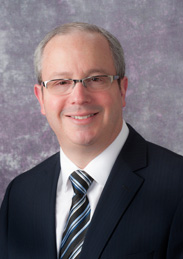 Indexed in Index Medicus and Medline
Indexed in Index Medicus and Medline
Free Articles
EDITORIAL
“The Stone Never Wins!”


A phrase I use with aplomb and emphasis in the clinic and operating room but expect nevertheless. It is my approach to the typical kidney stone but is applicable to both medicine and to life. Approaching a surgical procedure with the confidence of success to achieve one’s goals is reflective of an attitude that carries over into many aspects of life. This confidence comes from having a number of tools and techniques that can defeat these evil villains quite handily.
First, there is shock wave lithotripsy (SWL), which carries the promise of minimally invasiveness, but, ultimately, we know, the reality of only reasonable success rates. If we choose our patients wisely, then success rates can be improved. Remember, size less than 1.5 cm, upper pole or pelvis or upper ureter location and Hounsfield units less than 1000, with a skin-to-stone distance less than 13 cm, and with the addition of alpha blockers post procedure, improve your chances to be victorious.
And then there is ureteroscopy with laser lithotripsy (URS). This technique is quickly becoming the procedure of choice to treat the majority of stones. Most stones in most locations can be skillfully treated; with the main exception being the larger stones, that can be approached in a staged fashion, or the ever confounding lower pole stone. And then there is the stent. Yuck! If I could fix or change one thing magically tomorrow, it would be the ureteral stent. It tends to vilify a procedure that works well, producing a terrible aftertaste. That battle, however, is for another day!
Lastly, percutaneous nephrolithotomy (PCNL) is our best weapon in this ongoing battle. It has awesome “winning” success rates (high %80’s) with manageable side effects. We have stemmed the tide on bleeding complications (< 2% in most hands) with appropriate calyx selection, current balloon technology, and flexible nephroscopy. If your ultimate goal is stone free then this is the way to go. The same goes for the lower pole stone: you want it gone, PCNL is the best approach. The radiation exposure during the surgery to the patient and the surgeon remains a post skirmish sequela that still needs modification.
But the battle is not only won in the operating room. Providing metabolic evaluations to determine stone risk is the only way to keep these insurgents at bay. The goals switch to the long term to minimize both risk and return episodes. Getting 24 hour urine collections provides practical screening information that can actually make a difference.
With this armamentarium, the archetypal kidney stone doesn’t stand a chance. Heck, if we have to, we can even throw a laparoscope or a robot at these pesky menaces to defeat them. No stone will remain with all the weapons at our disposal. To arms!
Timothy D. Averch, MD, FACS UPMC Department of Urology Pittsburgh, PA, USA
Associate Editor
© The Canadian Journal of Urology™; 20(3); June 2013
6743

